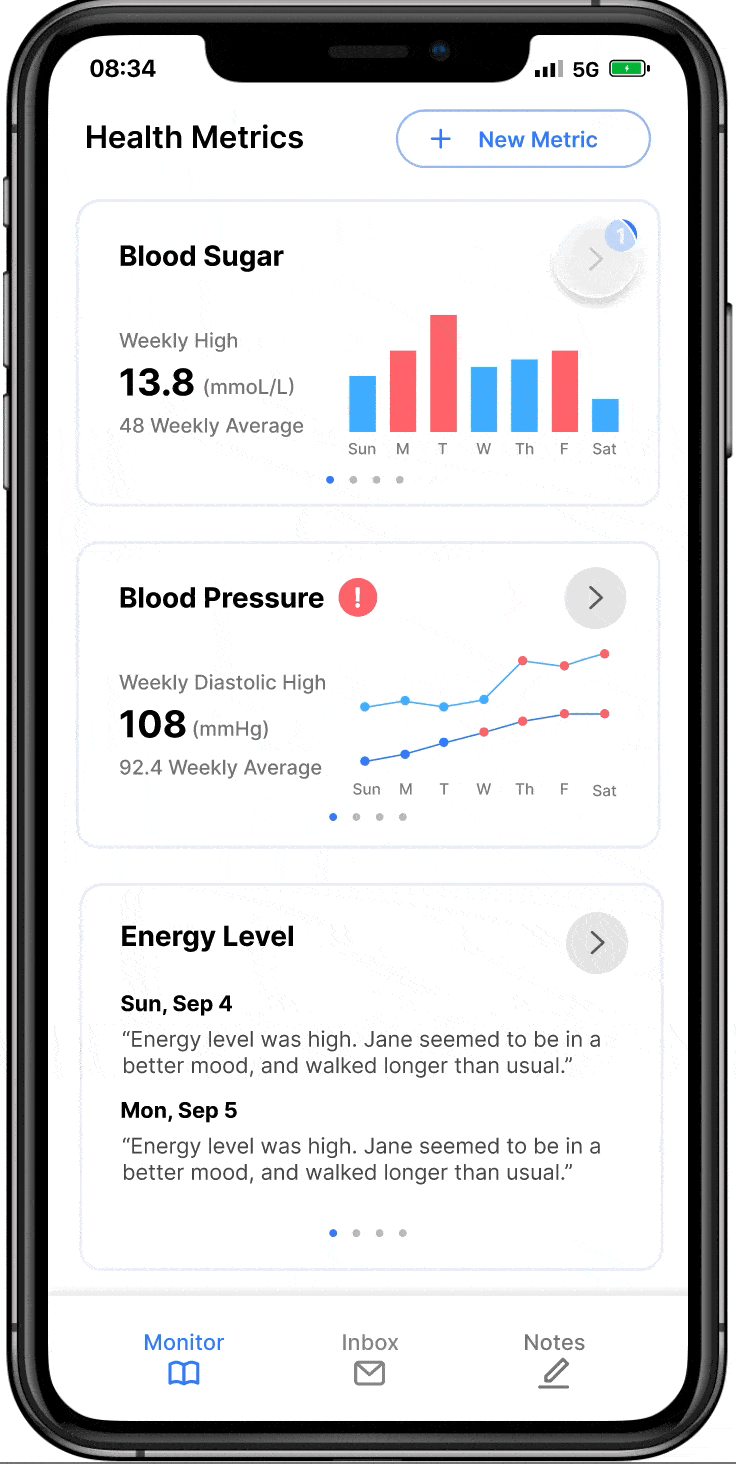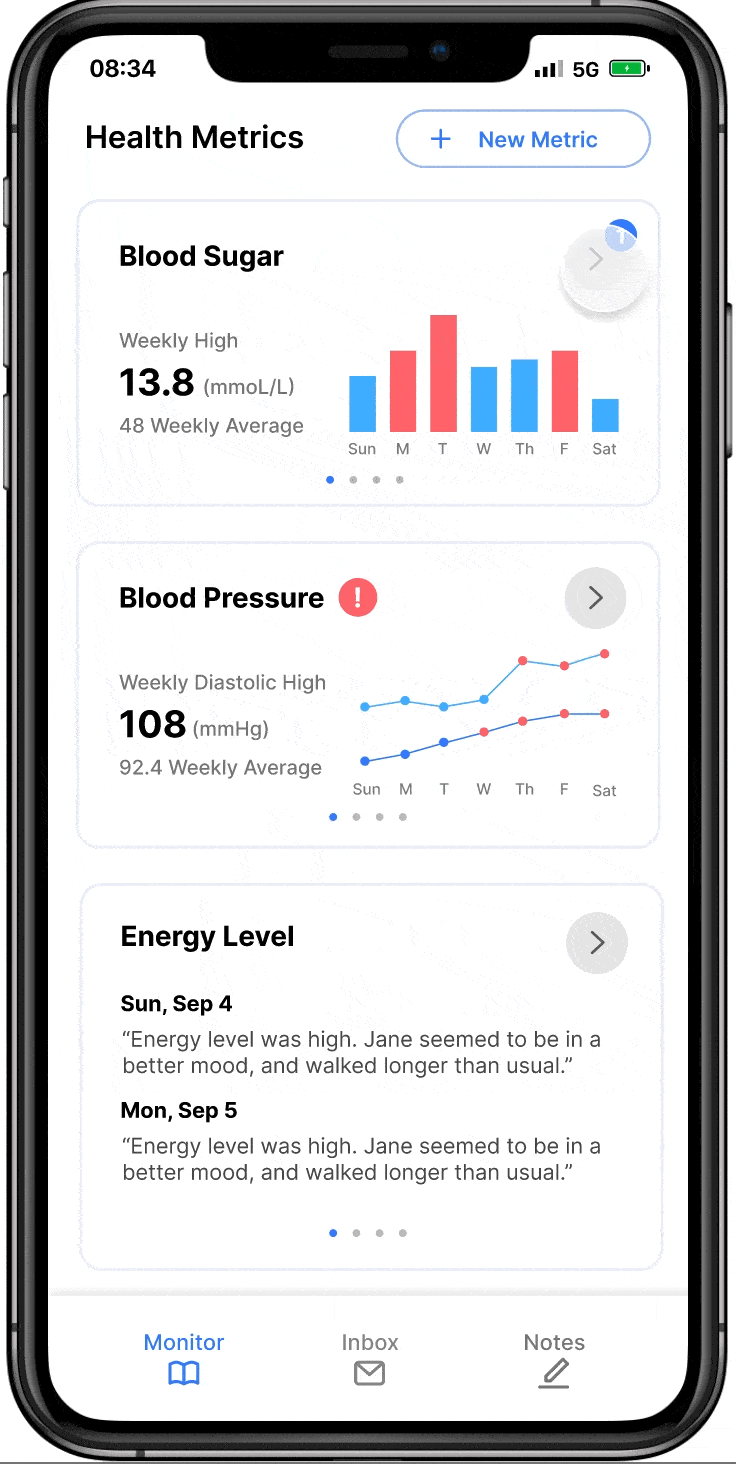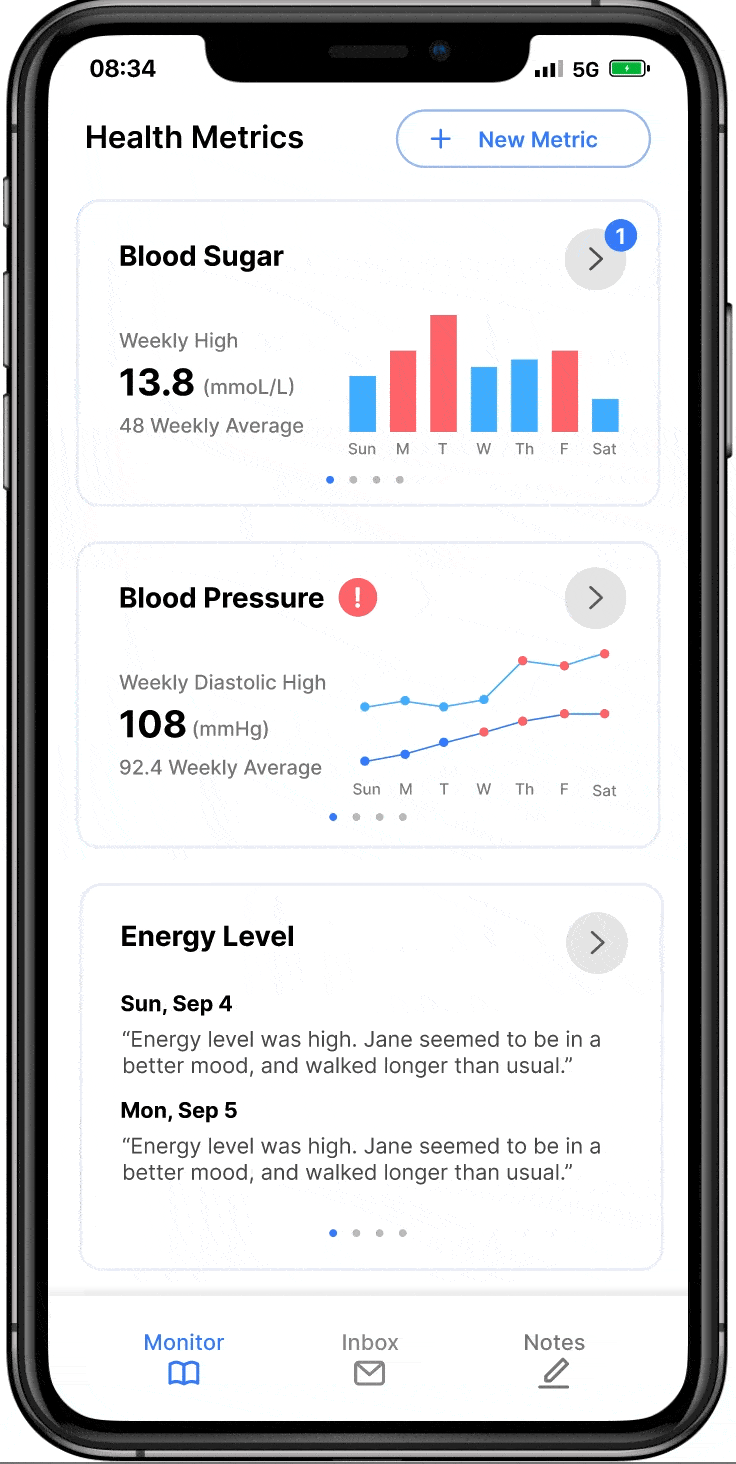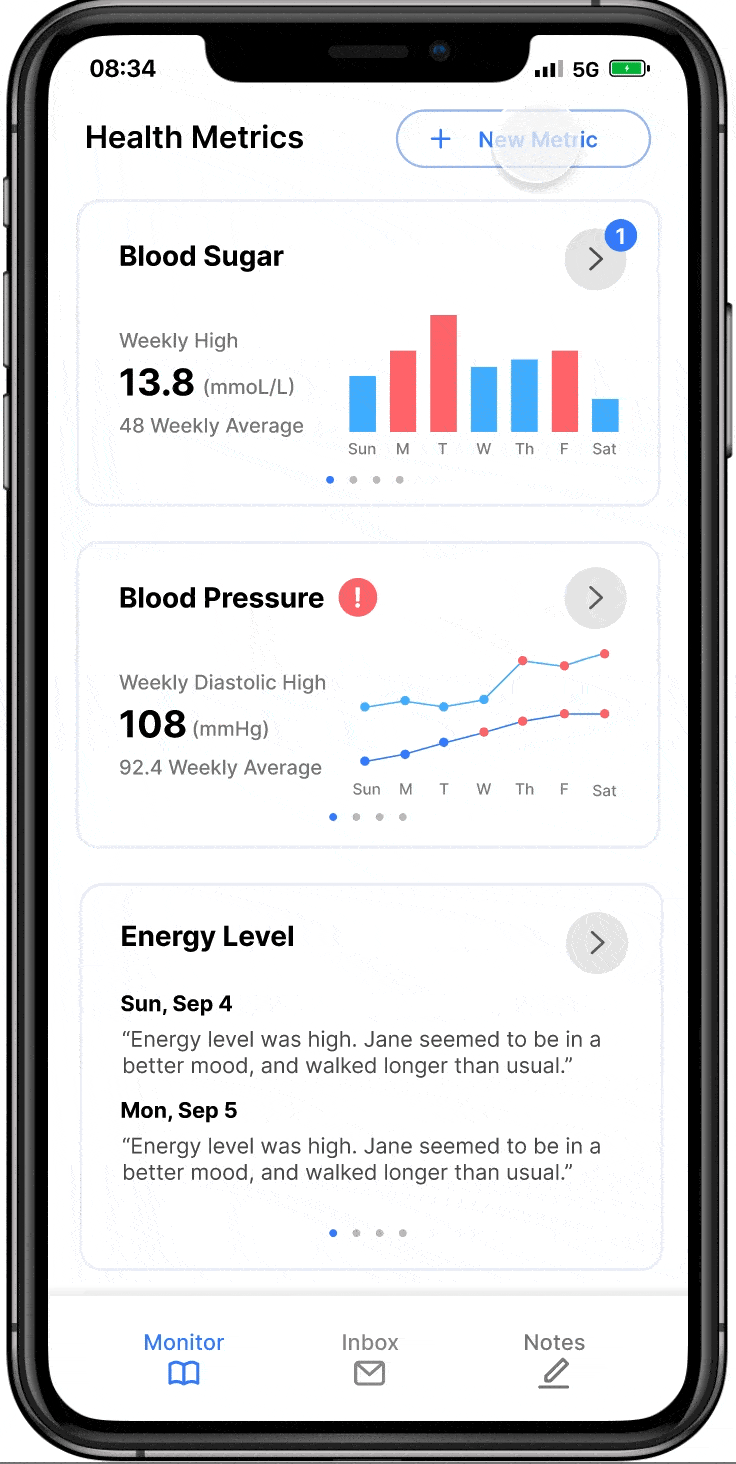Hey! This case study is still in progress. Check back soon for updates!
If you want to see other work, check out my
personal project Reach or
or what I did at Cash App this summer instead.


Michael Jia
Ellen Lau
Nathan Ling
User Research
Interaction Design
Prototyping
User Testing
3 Months
challenge
Solution Overview
Problem: Caretakers need a robust way to monitor and view a patient’s health trends
Solution: Being able to track multiple health metrics across time in an all-in-one application
Solution Overview
Problem: Caretakers need an easy way to record health stats
Solution: Support both manual entry and device-readings to log different types of health metrics
Solution Overview
Problem: Health irregularities are worrisome and caretakers often do not have a clear path of action (going to the ER vs. going to the doctor vs. waiting it out)
Solution: Use AI to detect irregularities in health, and prompt users to share the data with their primary doctor.
Solution Overview
Problem: Caretakers need an easy way to add new metrics to track, and include all relevant information (frequency, unit, safe limits)
Solution: A guided metric creation process that users can follow to add relevant health metrics or define custom ones.
Consulting secondary research, looking at competitors in the market, and conducting user interviews to narrow down our problem space. To proceed, we identified detailed requirements for our solution.
Our team split off individually to prototype freely, and came back to the table to discuss and combine our prototypes into two final ones.
We held 8 usability tests over both prototypes, keeping track of the overall metrics and final SUS scores to evaluate and compare.
From our findings, we openly collaborated to refine and improve our prototype.
Hey! This case study is still in progress. Check back soon for updates!
If you want to see other work, check out my
personal project Reach or
or what I did at Cash App this summer instead.



